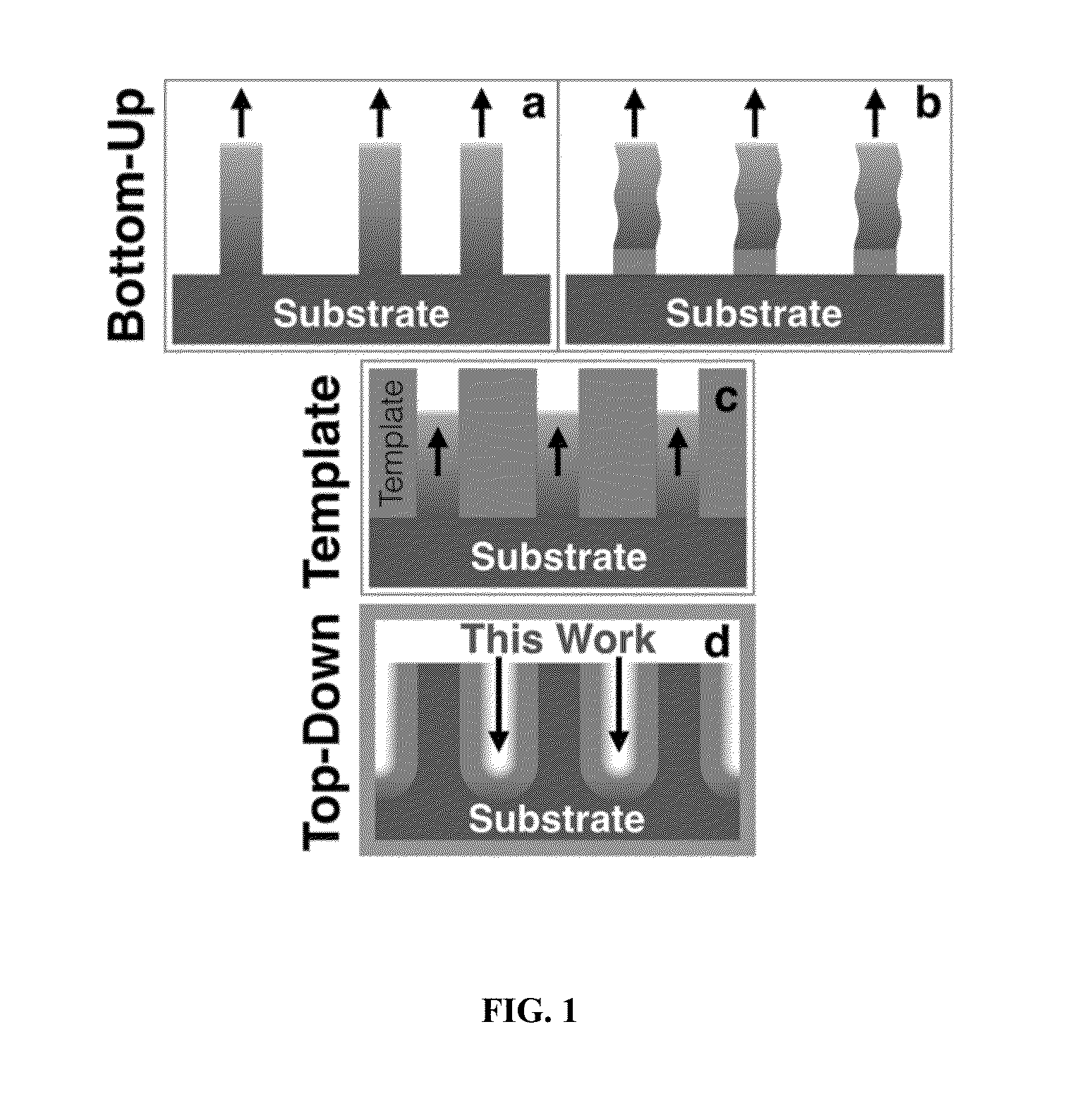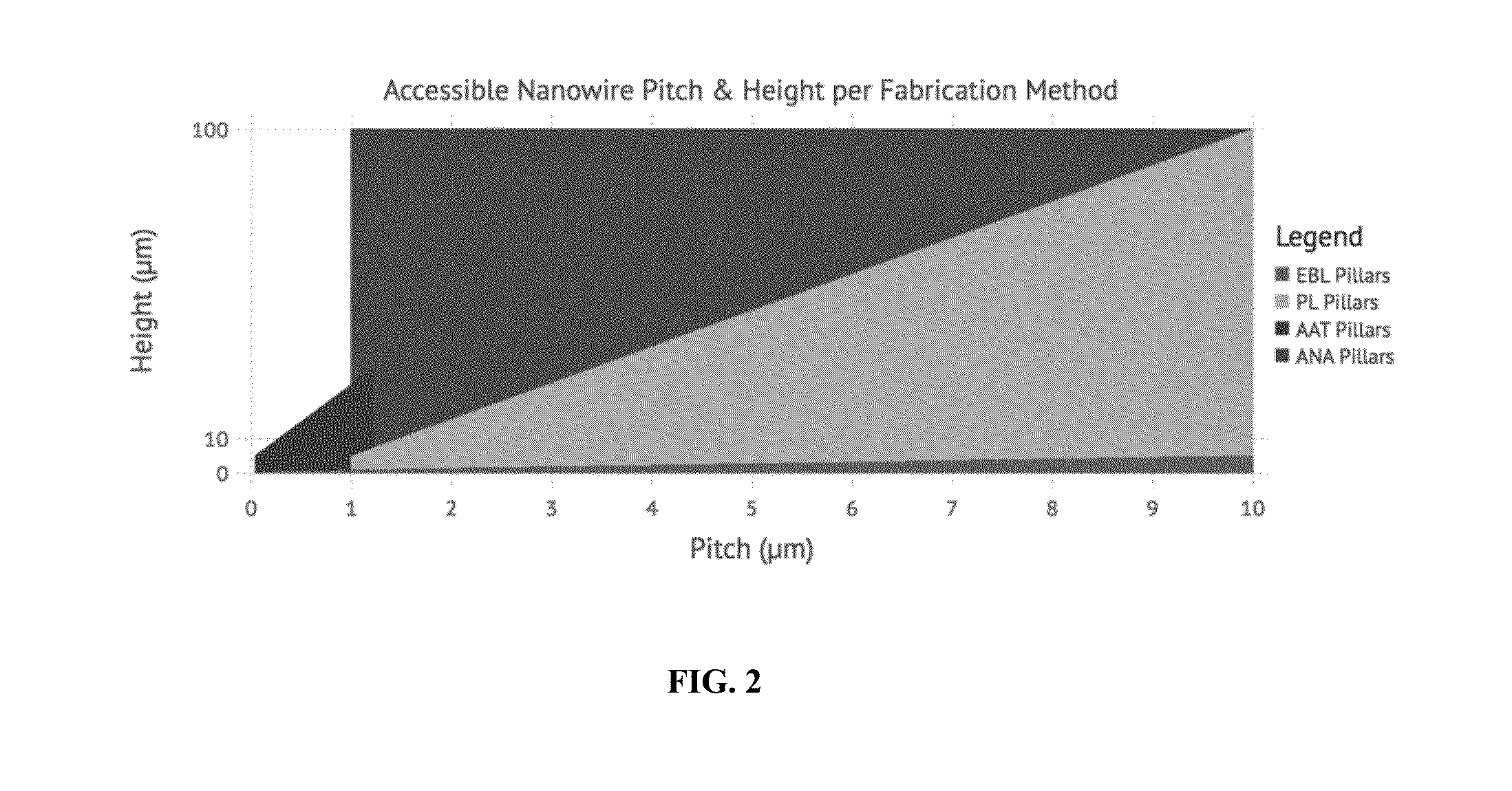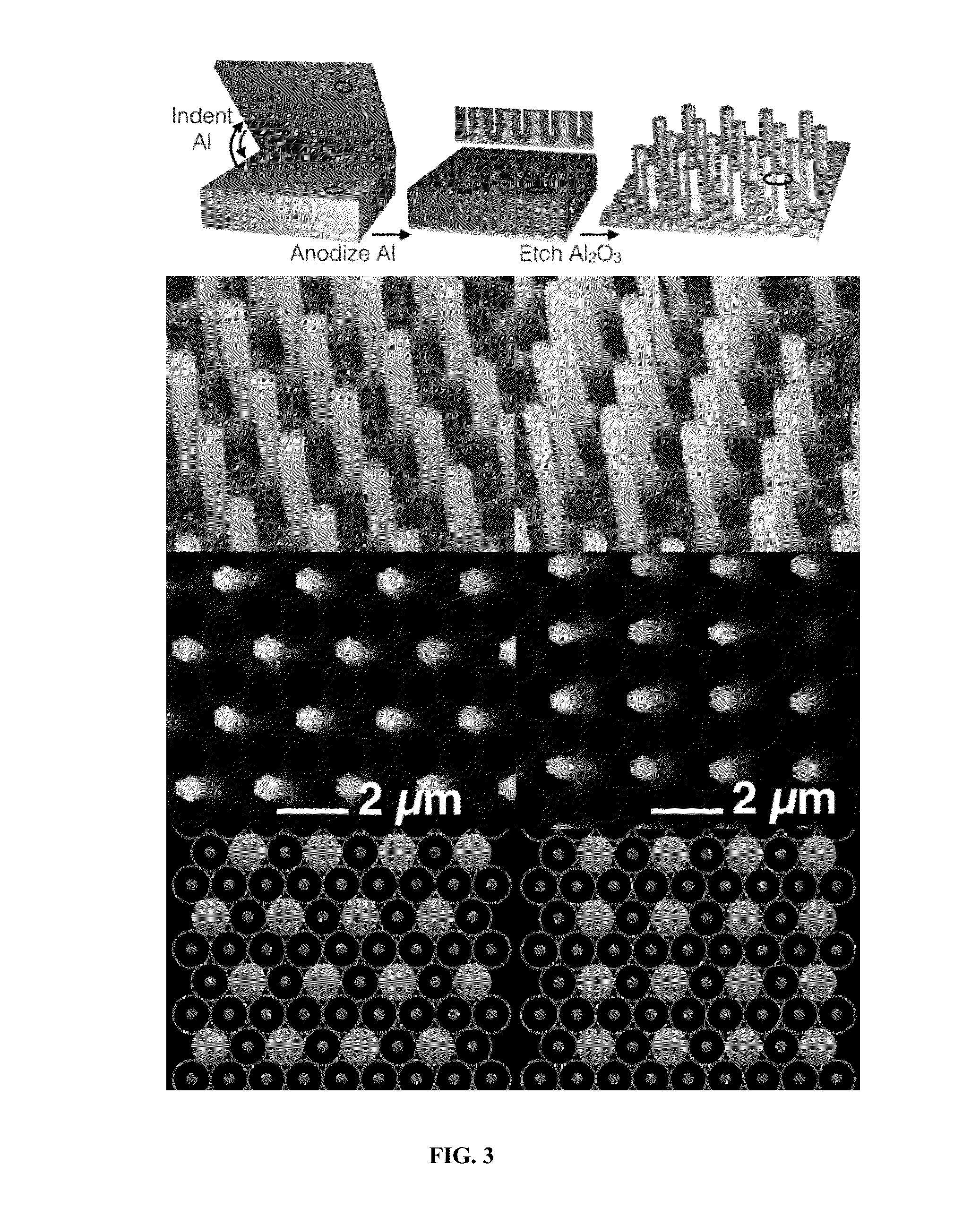Aluminum nanowire arrays and methods of preparation and use thereof
a technology of aluminum nanowires and arrays, applied in the field of aluminum nanowire arrays, can solve the problems of affecting the quality of aluminum nanowires, etc., and achieves the effects of low cost, large-scale production, and high tunability of array geometry
- Summary
- Abstract
- Description
- Claims
- Application Information
AI Technical Summary
Benefits of technology
Problems solved by technology
Method used
Image
Examples
example 1
Field Enhancement
[0074]A major application of metal nanostructures is enhancement of the electric field from radiation incident on the structure. In sensors this field enhancement improves the signal strength by enhancing interactions between the radiation and the target species that is in proximity of the nanostructure (e.g. SERS, SPR). In solar cells this field enhancement improves the absorption of the radiation by the solar absorber (e.g. a semiconductor or dye molecule).
[0075]There are two mechanisms for field enhancement with metal nanostructures: geometric confinement of electric field lines at sharp edges and excitation of plasmonic resonances. The former is relevant when the dispersion relation of surface plasmon polaritons (SPPs) is photonic in nature, nearly matching the light line as shown for Al in vacuum from 0 to 6 eV in FIG. 3. In this regime, the metal acts as a perfect electrical conductor (PEC), the electric field has negligible penetration into the metal, and the...
example 2
Al Nanowire Results
Method 1
[0096]Shown in FIG. 11 below is an AAT with a Si pillar embedded into the template, and the corresponding Al nanowire that formed as a result of the Si pillar preventing the nucleation of a pore at that site. An SEM of the Si pillar stamp is shown in FIG. 9.
Method 2
[0097]As shown in FIG. 12 below, it was found that Al nanowires only formed (under anodization conditions for 1.2 μm pore-to-pore pitch) when the diameter of the Ni posts used to indent the Al surface was ≦400 nm. See the SEMs in FIG. 3 for higher aspect ratio Al nanowires fabricated via this process.
example 3
Al Nanowire Array Fabrication
[0098]Ni posts were used to imprint the Al surface with an array of indents. Ni was chosen because of its hardness and compatibility with an electron-beam lithography (EBL) technique for fabricating post arrays. The use of EBL allowed Ni posts to be left out of certain lattice sites in the array, such that after imprinting the Al there would be missing indents at certain lattice sites of the indent array. This prevented the Al from anodizing at the sites of the missing indents. As shown in FIG. 15, there is apparently a maximum indent diameter for which pores selectively nucleate at indented sites and not sites missing an indent. FIG. 16 shows photographs of the experimental setup used in the fabrication of Ni posts and Al nanowires.
[0099]Stamp preparation: To produce the stamp, glass slides 16 mm×15 mm were piranha cleaned and then coated with 50 nm of Ni with a Sharon electron beam deposition system. HMDS (VLSI grade 0.1 μm filtered from Ultra Pure Sol...
PUM
| Property | Measurement | Unit |
|---|---|---|
| height | aaaaa | aaaaa |
| height | aaaaa | aaaaa |
| height | aaaaa | aaaaa |
Abstract
Description
Claims
Application Information
 Login to View More
Login to View More - R&D
- Intellectual Property
- Life Sciences
- Materials
- Tech Scout
- Unparalleled Data Quality
- Higher Quality Content
- 60% Fewer Hallucinations
Browse by: Latest US Patents, China's latest patents, Technical Efficacy Thesaurus, Application Domain, Technology Topic, Popular Technical Reports.
© 2025 PatSnap. All rights reserved.Legal|Privacy policy|Modern Slavery Act Transparency Statement|Sitemap|About US| Contact US: help@patsnap.com



